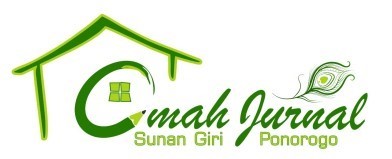Culture and Community in Agri-Tourism: Contributions of Cultural and Creative Resources to Strawberry Tourism
DOI:
https://doi.org/10.37680/amalee.v5i1.2589Keywords:
agri-tourism; cultural asset; creativity; rural culture; strawberry tourismAbstract
Agritourism is currently thriving as many modern visitors favor returning to rural nature over visiting metropolitan destinations. This evolving tendency might stoke locals' enthusiasm to start and develop agri-based tourism by using their farms, gardens, and other physical natural assets for both primary and secondary employment, such as by opening their properties up as agri-tourism destinations. These activities may improve the local population's ability to support themselves and their well-being as tourism has the potential to have multiplier effects. The growth of agritourism, however, might not be entirely dependent on a destination's natural or environmental resources. By using its cultural potential, it can instead be strengthened. The purpose of the research is to investigate how culture and community creativity can improve agritourism. The study is carried out at Lumbung Strawberry Tourism in Batu, Malang. The study finds that culture, when combined with natural resources, may support the growth of agritourism by enhancing the ethno-authenticity of the destination, highlighting its distinctiveness, communicating it, fostering locals' creativity, fostering innovation, boosting its popularity, and facilitating marketing. Along with utilizing its local rural agriculture, Lumbung Strawberry embraces the current of digital culture by creating destination Instagram accounts and offering locations for taking selfies and pictures.
References
Agung, L., & Nugraha, N. D. (2019). Digital culture and instagram: ‘Aesthetics for all?’ International moving image cultures conference. https://doi.org/DOI: 10.31937/imoviccon-9
Averill, J. R., Chon, K. K., & Hahn, D. W. (2001). Emotions and creativity, East and West. Asian Journal of Social Psychology, 4, 165–183.
Balogun, K. B. (2020). Agritourism development and communal socioeconomic sustainability in Nigeria. Afro Asian Journal of Social Sciences, XI(11.1 Quarter I), 1–17.
Belcher, B. (1996). The Role of Bamboo in Development. Bamboo, People and Environment, Socio-Economics and Culture, 1–103.
Bernardo, F., Almeida, J., & Martins, C. (2015). Urban identity and tourism: Different looks, one single place. Proceedings of the Institution of Civil Engineers, 1–12. http://dx.doi.org/10.1680/jurdp.15.00036
Burr, S. W., Chase, L., Ramaswamy, V., & Green, G. (2012). Agricultural tourism in the U.S. a collaborative research and extension project (No. IORT/028). Agricultural Marketing Resource Center.
Cambridge Assessment. International Education. (n.d.). Chapter 4: Innovation and creativity. Developing the Cambridge Learner Attributes. https://www.cambridgeinternational.org/Images/426483-chapter-4-innovation-and-creativity.pdf
Chandrashekara, U. M., Tikhile, P., Subbanna, S., & Viswanath, S. (2019). Socio—Cultural and Management Significance of Bamboos in Indian heritage and tradition. J. Bamboo and Rattan, 18(4), 63–72.
Chase, L., Manning, R., & Valliere, W. (2012). Agricultural and Culinary Tourism Literature Review: Summary of Findings and Annotated Bibliography. Vermont Department of Tourism and Marketing.
Chongtham, N. (2018). The healing touch of bamboo: Soul, mind and body. 11th World Bamboo Congress, Xalapa, Mexico.
Dionysopoulou, P. (2020). Agritourism entrepreneurship in Greece: Policy framework, inhibitory factors and a roadmap for further development. Journal of Sustainable Tourism and Entrepreneurship, 2(1), 1–13. https://doi.org/10.35912/joste.v2i1.352
Drosos, D., & Skordoulis, M. (2018). The role of environmental responsibility in tourism. J. International Business and Entrepreneurship Development, 11(1), 30–39.
EY. (2015). Cultural times. The first global map of cultural and creative industries (EYG no. EA0105). 2015 EYGM Limited.
Foroudi, P., Cuomo, M. T., Foroudi, M. M., Katsikeas, C. S., & Gupta, S. (2020). Linking identity and heritage with image and a reputation for competition. Journal of Business Research, 113, 317–325. https://doi.org/10.1016/j.jbusres.2019.09.042
Greffe, X. (2020). Chapter 1. Culture and Creativity. In Culture, Creativity and Cities.
Hondzel, C. D., & Gulliksen, M. S. (2015). Culture and Creativity: Examining Variations in Divergent Thinking Within Norwegian and Canadian Communities. SAGE Open, 1–13. https://doi.org/DOI: 10.1177/2158244015611448
Isdarmanto, Riantiarno, A., & Maftucha. (2019). Renewable effects of the culture selfie model in the perspective of global tourism development. Jurnal Kepariwisataan, 13(2), 59–76.
Javakheti, S., & Kartli, K. (2016). Agri-Tourism Strategy for Samtskhe-Javakheti and Kvemo Kartli Regions of Georgia. ICCN (International Center on Conflict and Negotiation) and Mercy Corps (The International Non-Governmental Organization).
Karyatun, S., Efendi, S., Demolingo, R. H., Wiweka, K., & Putri, A. P. (2021). Between Instagrammable Attraction and Selfie Tourist: Characteristic and Behavior. South Asian Journal of Social Studies and Economics, 12(4), 314–324. https://doi.org/DOI: 10.9734/SAJSSE/2021/v12i430338
Koentjaraningrat. (2000). Kebudayaan, mentalitas dan pembangunan. Gramedia Pustaka Utama.
Kumari, A. (2020). Impact of Cultural Differences on Creativity. International Journal of Research and Review, 7(10), 120–124.
Li, W., & He, S. (2019). Research on the Utilization and Development of Bamboo Resources through Problem Analysis and Assessment. 300. https://doi.org/doi:10.1088/1755-1315/300/5/052028
Loots, E., & Vermeulen, M. (2022). Assessing the impact of culture and creativity in society. A Magazine. Erasmus University Rotterdam, 1–107.
Luo, J. (2022). The Prospects of “Cultural Creativity” from the Perspective of Cultural Studies. Proceedings of the 2021 International Conference on Culture, Design and Social Development (CDSD 2021), 634, 116–119.
Marujo, N., Borges, M. Do R., & Serra, E. J. (2020). Tourism, culture and creativity: The case of the CREATOUR project in the Alentejo/Portugal region. In Advances in Tourism, Technology and Smart Systems, Smart Innovation, Systems and Technologies (Vol. 171, pp. 691–692). Springer Nature Singapore Pte Ltd. https://doi.org/10.1007/978-981-15-2024-2_59
Mkwizu, K. H., & Mtae, H. G. (2018). Selfie and Marketing of Domestic Tourism. International Journal of Research & Methodology in Social Science, 4(3), 77–87. https://doi.org/DOI: 10.5281/zenodo.2545024
Mungkhun, M., Poungsuk, P., Intorrathed, S., & Sittijinda, P. (2021). A creative agricultural resource management to support tourism in Phuket Province. International Journal of Agricultural Technology, 17(2), 557–570.
Ortigueira, L. C., & Gómez-Selemeneva, D. (2011). Critical success factors of a tourist destination in the Caribbean. Book of Proceedings Vol. I, 201–214.
Pavić, L., Pažek, K., & Pavlovič, M. (2018). Agritourism. Between agriculture and tourism. A Review. 243–257. https://doi.org/DOI: https://doi.org/10.31410/tmt.2018.243
Rambodagedara, R. M. M. H. K., Silva, D. A. C. S., & Perera, S. (2015). Agro-Tourism Development in Farming Community: Opportunities and Challenges (Research Report No: 188; pp. 1–52). Hector Kobbekaduwa Agrarian Research and Training Institute.
Robinson, M., & Picard, D. (2006). Tourism, Culture and Sustainable Development (Doc no CLT/CPD/CAD – 06/13; pp. 4–95). Unesco.
Rubio-Arostegui, J. A., Pecourt, J., & Rius-Ulldemolins, J. (2016). Uses and Abuses of Creativity. Sociology of creative processes, transitions to digital and creative policies. Debats. Journal on Culture, Power and Society, 1, 123–142.
Sawyer, K. (2015). The Sociocultural approach to creativity. In Rethinking Creativity. Contributions from Social and Cultural Psychology. (Edited by: V. P. Glăveanu, A. Gillespie, J. Valsiner, pp. 1–144). Routledge.
Singha, K. N., & Timung, L. (2015). Significance of bamboo in Karbi culture: A case study among the Karbi Tribes of Assam (India). International Journal of Advanced Research in Biology and BioTechnology, 1(1), 1–9.
Siringoringo, D., Tampubolon, J., & Aritonang, J. (2022). Tourism and Agricultural Linkage in Lake Toba National Tourism Strategic Area, North Sumatra, Indonesia. Quest Journals. Journal of Research in Business and Management, 10(4), 40–46.
Sofronov, B. (2018). Millennials: A New Trend for the Tourism Industry. Annals of Spiru Haret University. Economic Series, 18(3), 109–122. https://doi.org/doi: https://doi.org/10.26458/1838
Stankov, U., & Gretzel, U. (2021). Digital well‑being in the tourism domain: Mapping new roles and responsibilities. Information Technology & Tourism, 23, 5–17. https://doi.org/10.1007/s40558-021-00197-3
Unesco. (2022). Reshaping policies for Creativity. Addressing culture as a global public good (Global Report, pp. 1–328). the United Nations Educational, Scientific and Cultural Organization (UNESCO).
Velayuthan, S. K., & Hashim, N. H. (2022). Information Authenticity and Tourism Destination Image Formation through Computer-Mediated Communication: A Proposed Framework. Proceedings. https://doi.org/ 10.3390/proceedings2022082082
Vezzali, L., Goclowska, M., Crisp, R. J., & Stathi, S. (2016). On the Relationship between Cultural Diversity and Creativity in Education: The Moderating Role of Communal versus Divisional Mindset. Thinking Skills and Creativity, 21, 1–22.
Yu, X. (2007). Bamboo: Structure and Culture Utilizing bamboo in the industrial context with reference to its structural and cultural dimensions [Dissertation].
Yuming, Y., Kanglin, W., Shengji, P., & Jiming, H. (2004). Bamboo Diversity and Traditional Uses in Yunnan, China. Mountain Research and Development, 24(2), 157–165. https://doi.org/DOI: 10.1659/0276-4741(2004)024[0157:BDATUI]2.0.CO;2
Yuniarso, A., Wiyana, T., Zulkarnain, A., & Khrisnanto, I. (2018). Travel selfie dan destination image: Studi kasus Taman Bunga Jalan Jalur Lingkar Selatan (JILS) Yogyakarta. 93–102.
Downloads
Published
How to Cite
Issue
Section
License
Authors who submit manuscript retain its copyright and grant Amalee right of first publication licensed under a Creative Commons Attribution-ShareAlike 4.0 International License (CC BY-SA 4.0) that allows others to access (search, read, download, and cite), share (copy and redistribute the material in any medium or format) and adapt (remix, transform, and build upon any material) the work for any lawful purpose, even commercially with an acknowledgement of the work's authorship and initial publication in Amalee: Indonesian Journal of Community Research and Engagement.














